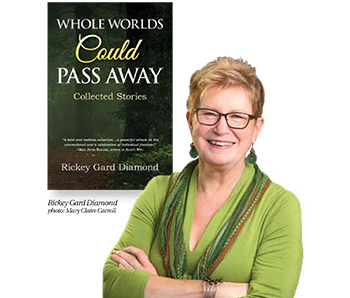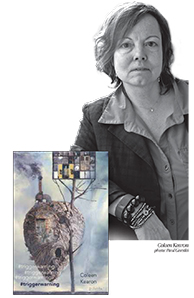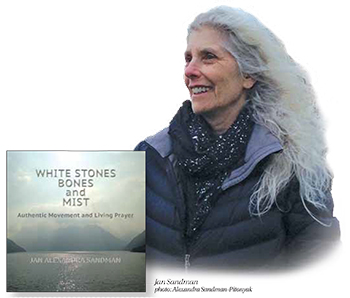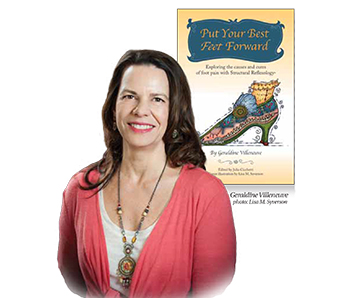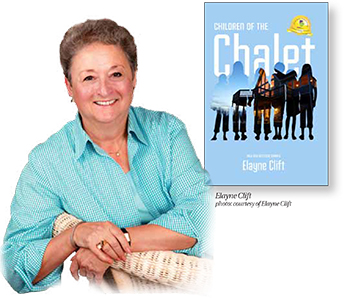| Getting the Word Out: Publishing in Today's Brave New World | |||||||||||||
| by Kelley Hunter | |||||||||||||
“You should write a book!” Has anyone ever said that to you after hearing about your life experiences? Everyone has a story. Many of us have thought of writing down these stories, whether for family or for posterity or for ourselves. For some, a book is an elaborate business card, substantiating professional viability or giving entre to a teaching position. For others, it’s a creative calling or an inner necessity to share meaningful material or to participate in the collective dialogue. Writing can help clarify our ideas about a subject or about life. Putting a manuscript together takes commitment, and publishing a book can be a courageous act of expressing ourselves, sharing our vision, our deep fantasies and private thoughts with the world. Vermont writer Rickey Gard Diamond says, “I’ve read books that have deeply moved me. As a writer, I’d like to deeply move my readers.” But it’s not all that easy to get one published. Only a tiny percent of completed manuscripts see the light of day. The impact of increasing large conglomerate publishing houses and the Internet revolution have both changed the playing field. Out of aesthetic necessity new business models for publishing are being developed.
“Traditional publishing is tough,” Diamond notes, “especially for women writers. Over time women have come into their own in certain genres, but not others, and generally speaking, have gained ground only as writers and ‘literature’ have become more marginalized in the US. The measure of celebrity and how much money you’ve made leaves even great writers low on the totem pole of US success. Happily women are still the biggest readers.” Small presses have, for decades, provided a venue for unknown up-and-coming writers or writers whose work has merit but is not considered marketable. Several small publishers have made their home in Vermont. Green Writers Press gives “voice to writers who will make the world a better place.” Verdant Books works closely with its writers, specializing in “provocative, engaging literature” that "challenges the dominant paradigm.” Upper Access is a small, traditional press interested in “nonfiction books to improve the quality of life.”
Diamond published her first novel, Second Sight, in 1997 with Calyx Press, a small, traditional press for women writers. In an exciting development, Diamond's novel was sold to HarperCollins Publishers, one of the large houses capable of reaching a wider audience. She got more exposure, including a review in the New York Times with the 1999 edition, but sales weren't fast enough for the company. Her book was remaindered, dropped off their active list. The first edition remains in print, though, a commitment Calyx makes to its authors, a key reason Diamond chose them. It is all too common for women's books to disappear. Self-publishing, once considered the realm of the vain and the untalented, has grown greatly over the years and lost some of its perjorative sheen. Desktop publishing—the ability to, theoretically, design and put together a book on your desktop computer—likely initially fueled the growth, making it possible for more writers to publish on their own. Writers often choose this path either out of frustration or because they want more control over the process—including more of the revenue from sales. But there’s more to producing a professional-looking product than most people realize, and marketing and distributing present their own challenges. And so enter companies offering a menu of services to writers, from editing and proofreading, to book design and printing, to marketing and distribution. In the mid to late ’90s, several companies came into existence, among them AuthorHouse, iUniverse, Trafford, and Xlibris. These companies were all acquired by Author Solutions, founded in 2007—around the time self-publishing experienced a surge in growth. Author Solutions has partnerships with the self-publishing arms of traditional publishers, among them Archway Publishing (Simon & Schuster), Balboa Press (Hay House), and WestBow Press (Thomas Nelson & Zondervan). In the Byzantine world of publishing mergers, Zondervan was bought by HarperCollins, which in turn is part of News Corporation, owned by none other than Rupert Murdoch. I have two books in print with specialized publishers in my primary field (astrology and mythology) that bring in a steady trickle of royalties at the basic 10 percent (or less for the e-book versions). Wanting to extend my reach and increase my revenue, I self-published my new Planetary Gods and Goddesses Coloring Book: Astronomy and Myths of the New Solar System under my own imprint, Helia Productions. I used CreateSpace, the highly accessible print-on-demand option under the Amazon umbrella. It was a brave and daunting new world for me, navigating the world of publishing. I learned a lot along the way about the nitty-gritty—getting an ISBN number and barcode, learning how to upload to the Internet and to create promo material and press releases. I had some unexpected investments: graphics support cost more than planned. I eventually realized I needed a book designer. When I learned that bookstores and libraries won’t buy from Amazon, I also uploaded to Ingram Spark, the self-publishing arm of Ingram global book distributors. After various forms of feedback and tweaking, the book was finally published. Then came marketing, frankly less enjoyable than the creative process. I thought my modest but respectable Facebook presence and e-mail list would yield more sales than they did. I didn’t take on Amazon review system strategies. After some initiatives, including outreach to researched bookstores, targeted advertising, local presentations, and Instagram, I found I just can’t and don’t want to manage that whole ball of wax. I’m seeking a social-media-savvy millennial, while I get back to my rewarding, bread-and-butter consultation practice and webinar teaching. I talked to others who had similar experiences with self-publishing.
With a full-time professional practice and teaching schedule, Sandman admits she doesn’t want to spend her time on marketing: “It’s not what I do.” She has upgraded her website and is doing local readings, appreciating the good response and enjoying the satisfaction of completing the book and having it available to interested readers. Her students and workshop participants already treasure it. She’ll make some choices from there, she says, realizing that recouping her investment will take some time. Another healing arts practitioner, Geraldine Villeneuve, a structural reflexologist in Essex, has her first book out. Put Your Best Feet Forward educates the reader about little-known issues of foot health drawn from her decades of experience. She signed with Balboa Press, the self-publishing arm of Hay House.
Villeneuve was happier with Balboa’s marketing services. They developed her author website and a social media campaign and provided the opportunity for a Hay House podcast interview with a broad listener reach. Taking time off from her busy practice and teaching work, she determined to devote two complete months to promotion. She is working with a hired publicist to extend her geographical reach. She has been booked for a keynote presentation in Europe and for teaching in Chicago next year. Villeneuve is hopeful about being picked up by the prestigious Hay House parent company and envisions a follow-up book for practitioners. Whatever the ultimate outcome, Villeneuve is very proud of getting this work written and published. “The whole process of completing something on this scale is quite an accomplishment in itself. You make an investment in your own vehicle to get your message out.” Thus she echoes Brooke Warner, cofounder of She Writes Press, who said in a recent TED talk: “Green-lighting your own work is a bigger act of courage than to wait for someone else’s yes.”
Clift has never used an agent or a publicist, fearlessly taking on the entrepreneurial tasks of production and marketing. "Nobody knows your work like you do," she explains. A columnist and blogger, she knows her audience and has a following. Writing is her form of activism. "I have a lot to say about things. I say it succinctly and I hope I say it well," she says. Over the years her writings have appeared in major newspapers, such as the Washington Post, the Christian Science Monitor, and the Boston Globe, and many more magazines, periodicals, and anthologies.
Recently, a hybrid model of publishing has emerged, somewhere between traditional publishing and the services offered by self-publishing outfits. The hybrid publishers are more selective about what they choose to publish and are more hands-on with the editing. However, they are more accepting than a traditional publisher, and like self-publishing companies, the author pays for services. Hybrid publishers are less of a gamble for those who run them because the writers themselves pay upfront for a clear, complete, and participatory package of services. Authors retain their copyright and receive a much higher percentage of sales.
Diamond’s new book, Screwnomics: How the Economy Works Against Women and Real Ways to Make Lasting Change, will be published by She Writes Press next April. Diamond is now developing podcasting, social media, and events to educate on macroeconomics and to promote her book, with her signature touch of humor, which matches the cartoon-like illustrations in Screwnomics. Diamond’s husband, Stephen McArthur, recently started Rootstock Publishing, a hybrid publisher similar to She Writes. Rootstock has high standards for acceptance, aiming to publish a small number of excellent book projects each year, both fiction and nonfiction. For a basic fee, Rootstock provides personal attention and services from editing all the way through production to marketing. Authors pay for printing. McArthur and Diamond found their inspiration in Leonard and Virginia Woolf who started Hogarth Press. Fresh off the press from Rootstock is Whole Worlds Could Pass Away, a collection of Diamond’s short stories, previously published separately and now stitched together in a novel-like sequence. The relationship between writer and reader remains at the heart of the book experience, even though it has been changing in some ways along with the publishing world. Authors now have more input on how their work gets to readers and more options for continuing interaction with them. With book in hand or e-book, they get the word out through library readings, bookstore signings, online blogs, and through Facebook, Instagram, Twitter, and Goodreads. It all comes back to a unique level of communication that happens through time, from writing to reading, from one heart and mind to another. |
|||||||||||||
|
Kelley Hunter, PhD, is a depth astrologist and mythoastrologist. She is the author of Lilith: Four Dimensions of the Cosmic Feminine (Wessex Astrologer, 2009) and Black Moon Lilith (American Federation of Astrologers, 2010).
|
||||||||||||
